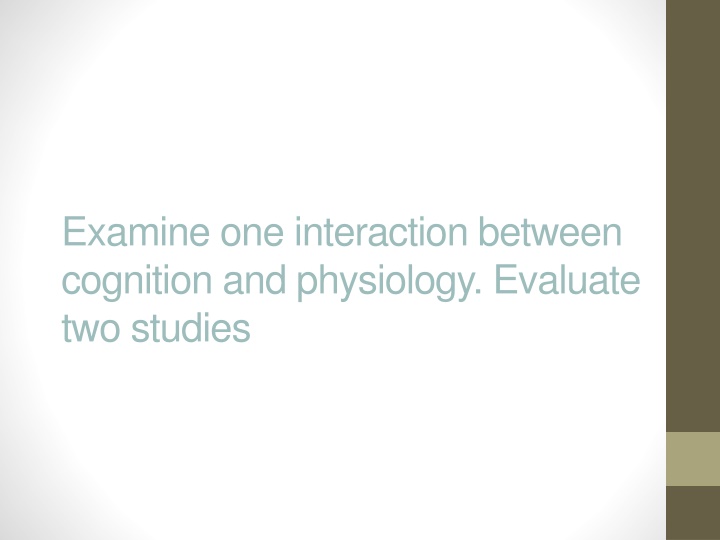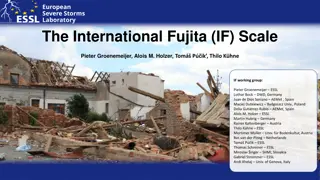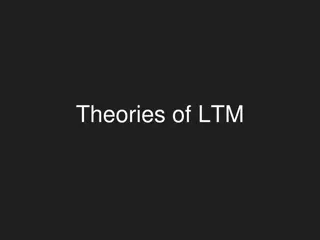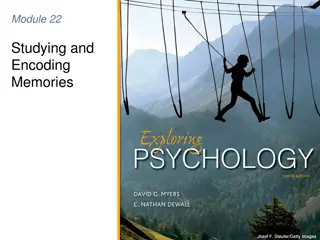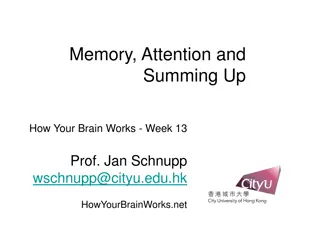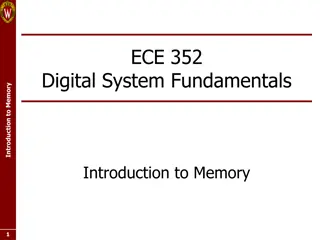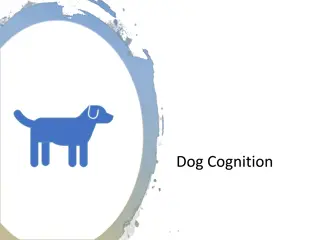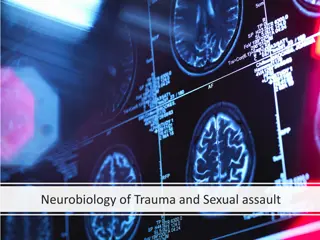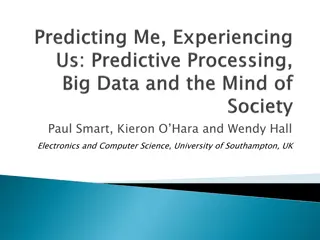Interaction between Cognition and Physiology: Impact of Brain Damage on Memory
The case of Clive Wearing, who suffered from both retrograde and anterograde amnesia after brain damage. Learn about the effects of hippocampal injury on memory processing and the devastating consequences of herpes encephalitis. Discover how cognitive functions are intricately linked to physiological changes and understand the lasting impacts of amnesia on daily life.
Download Presentation

Please find below an Image/Link to download the presentation.
The content on the website is provided AS IS for your information and personal use only. It may not be sold, licensed, or shared on other websites without obtaining consent from the author.If you encounter any issues during the download, it is possible that the publisher has removed the file from their server.
You are allowed to download the files provided on this website for personal or commercial use, subject to the condition that they are used lawfully. All files are the property of their respective owners.
The content on the website is provided AS IS for your information and personal use only. It may not be sold, licensed, or shared on other websites without obtaining consent from the author.
E N D
Presentation Transcript
Examine one interaction between cognition and physiology. Evaluate two studies
How brain damage affects memory processing Refers to the learning outcome: Explain how biological factors may affect one cognitive process
Whatis amnesia? Memory loss (inability to learn new information or retrieve information) Two types I.Retrograde Memory loss of events BEFORE brain damage II. Anterograde Memory loss of events AFTER brain damage Info: http://www.tbiguide.com/memory.html
Causes Developmental issues Concussion Migraines Epilepsy Electroconvulsive shock therapy Specific brain lesions (i.e. surgical removal) HM Drugs Infection Clive Wearing Psychological (trauma) Nutritional deficiency Lack of Sleep!
Famous case: Clive Wearing Suffers both anterograde and retrograde MRI scan shows damage to the hippocampus and some of the frontal regions Episodic memory and some semantic memory are lost cannot put new information in long term memory Implicit memory and emotional memory still intact Memory span: few seconds
How Clive Wearing percieves it Not able to remember anything for more than a blink Kept a journal I am awake This time finally awake I was fully conscious at 10.35p.m Forever today Deborah 2005
How it happened? In March 1985 In his forties Brain Infection (Herpes encephalitis) Injured hippocampus Hippocampus - center for long term memory Perception was unimpaired but he could almost not remember anything The most devastating case of amnesia ever recorded
CLIP ON CLIVE WEARING! https://www.youtube.com/w atch?v=c62C_yTUyVg http://www.youtube.com/wa tch?v=WmzU47i2xgw http://www.youtube.com/wa tch?v=Vwigmktix2Y
Case study: HM anterograde amnesia First studied by Milner & Scoville 1957 Head injury when he was 9 Epileptic seizures No drug treatment surgey 27 years old Removed tissue from the temporal lobe, including hippocampus, the amygdala H.M.'s Brain and the History of Memory by Brian Newhouse: http://www.npr.org/player/v2/mediaPlayer .html?action=1&t=1&islist=false&id=75849 70&m=7584971
HM Henry Molaison taught us about memory by losing his
HM after the surgery Cured his seizures, gave him amnesia (anterogade) Able to: Carry on a conversation Not able to: Recognize people and also rereads magazines. Can remember if rehearsed MRI scanner in 1997 that supported what was suspected Answer ethics in research on p. 79 and understanding research
Interaction cognition and physiology HM s amnesia Could not memorize new EXPLICIT (declarative) memories (both semantic and episodic memory) Intact procedural memories Physiology Parts of hippocampus was removed and most of the amygdala Cerebellum was not damaged
Critical thinking the case studies Strengths Limitations Raise interesting questions for further research Could generalize if similar cases in depth, rich data through a variety of methods High ecological validity Longitudinal Ethical if not stressful and nor forcing Researchers too close to the participants Time consuming Ethical considerations; Long, intense, stressful More difficult to generalize
MRI study and Medial Temporal Lobe Amnesia Varga-Khadem et al. (1997) performed a study using MRI scanning with three young patients who had brain injuries. Aim; investigate the relationship between the brain injury and anterograde amnesia. Methods; MRI scanning and memory tests/experiments Participants; One child had suffered brain damage at birth, the second by the age of 4 years, and the third one by the age of 9.
Results; all three children had damage to the hippocampus. Amnesia - severe problems with episodic memory, their cognitive development was within the normal range. They were low-average to average in language skills, factual knowledge, and literacy. Conclusion; the study provides support for the idea that there are separate episodic and semantic stores in long-term memory. Only episodic memory seems to be fully dependent on the hippocampus. Critical thinking; a lot of scientific research support this
CONCLUSION We have learned a lot about memory and amnesia from case studies but individual cases are not as statistically powerful as group studies 16
animal research is needed for in depth analysis Animal research show the same thing
Critical thinking research and theories Case studies +/- Scanning evidence +/- Few cases Animal research (cause amnesia in e g monkeys and investigate) +/- Applicability Useful and important findings 1) Treat the amnesia 2) The existence of Multiple memory systems 3) Localization of cognitive functions 18
Summary You can use Clive and H.M as support (how biological factors may affect one cognitive process: brain damage on memory) H.M and Clive W can also be used as support for the multi- store model of memory (since they show that our memory consists of different memory systems) Both can be used as support in LO about ethical considerations Since you need two biological factors: you can use the study by Martinez and Kesner (1991) Ach in memory formation You can also (great isn t it?) use H.M and Clive for the LO in the biological level of analysis: Examine one interaction between cognition and physiology in terms of behaviour
